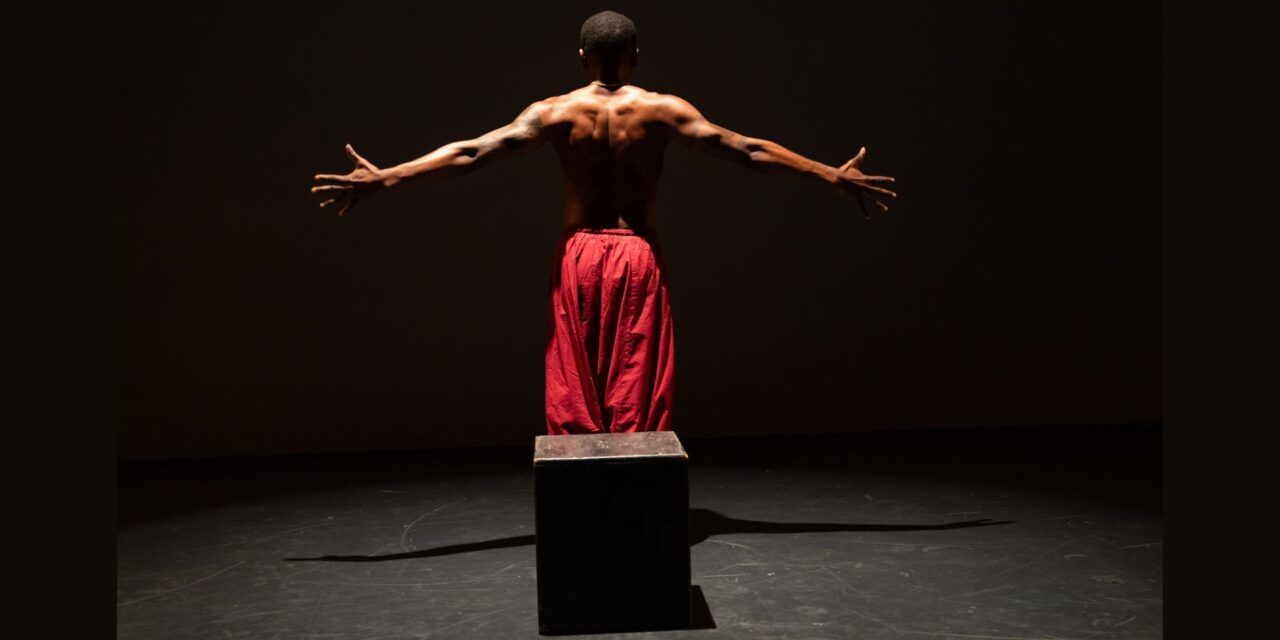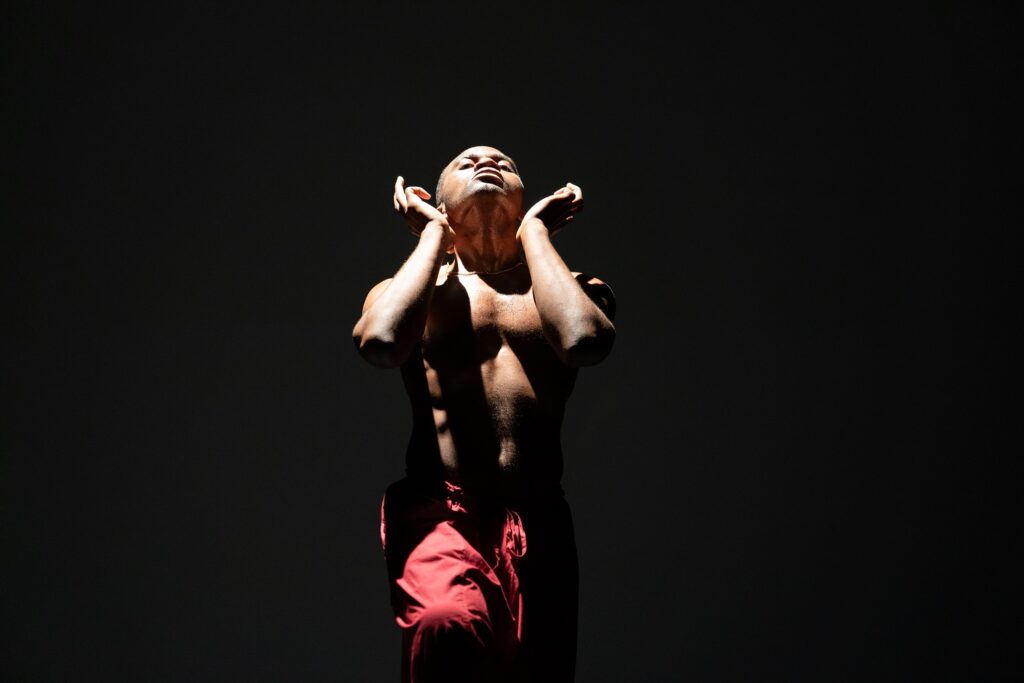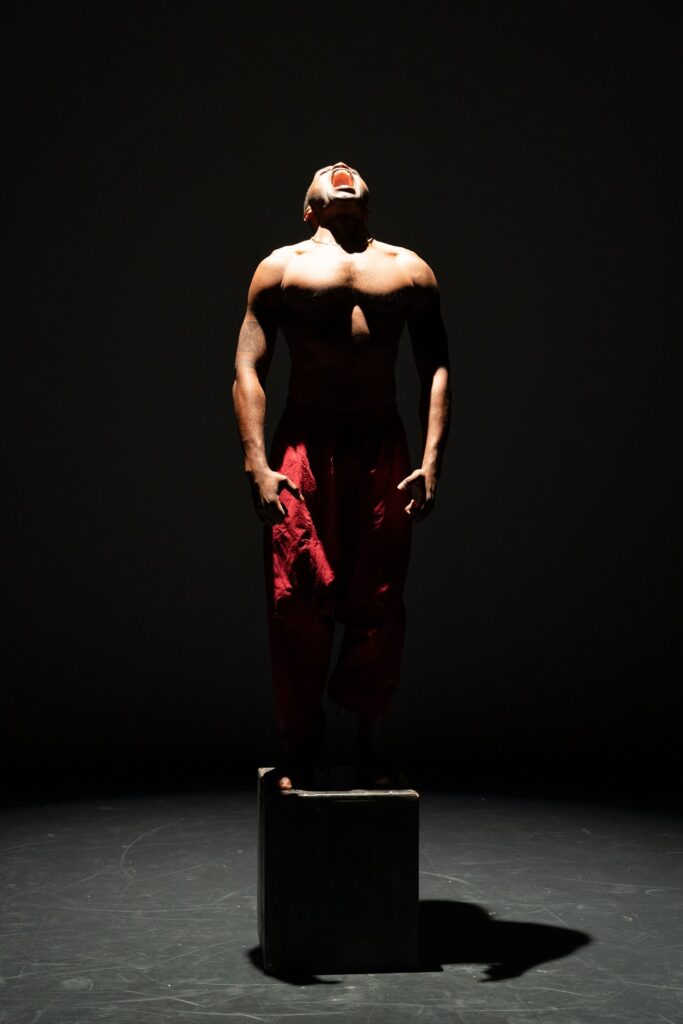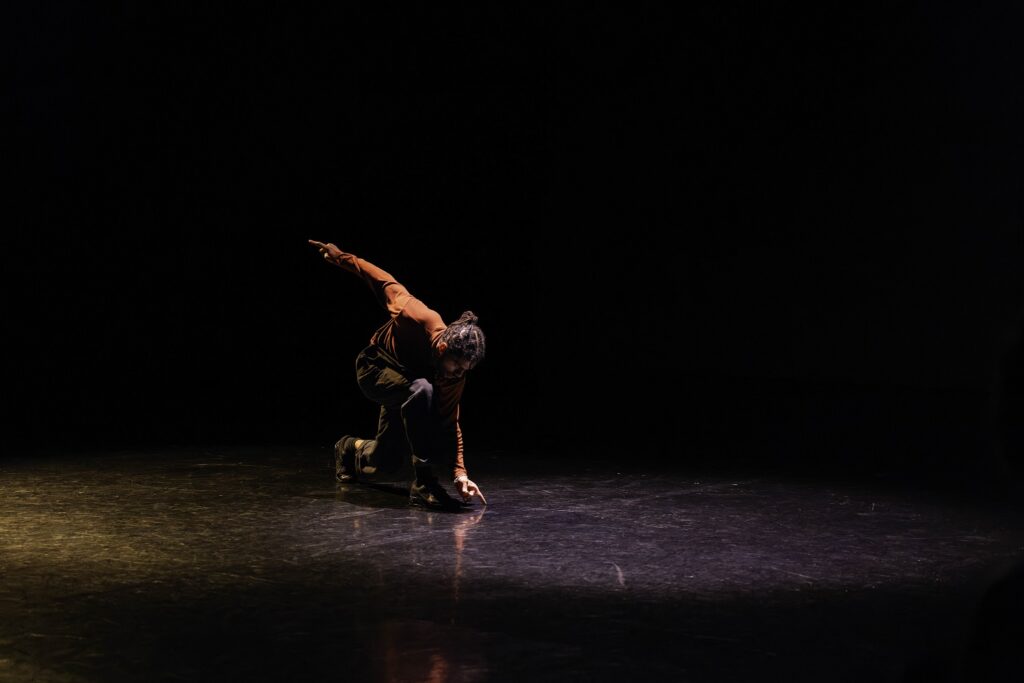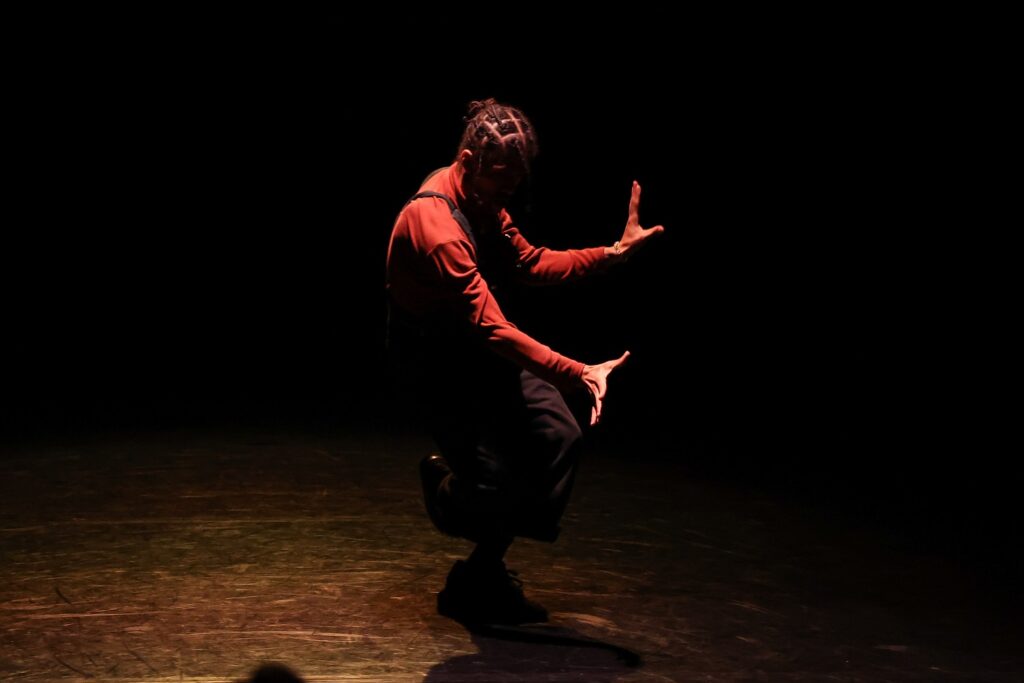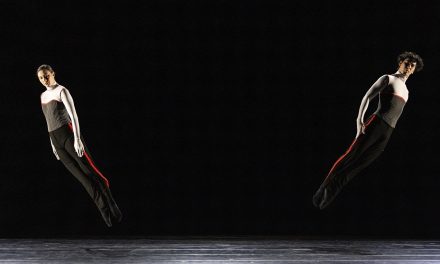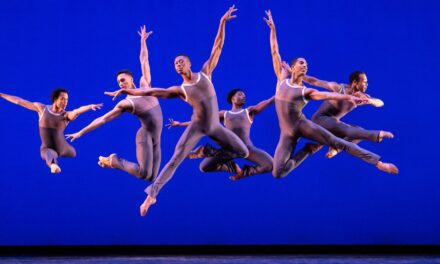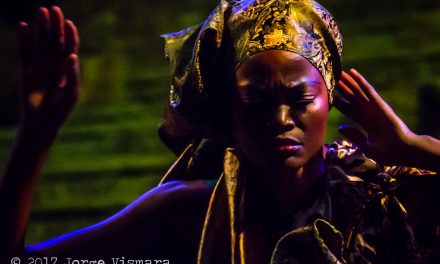L.A.-based hip-hop and theatre artist Tsiambwom “T” Akuchu is a master of his own movements and, as “Market Demographics,” his show at Highways Performance Space and Gallery in Santa Monica on June 13 and 14, proved, of choreographic direction for others as well. The almost two-hour performance, including a short intermission and pause, was divided into three acts and nine sections, ranging from solo to duet to group pieces.
Akuchu, who is on the faculty at California State University, Long Beach (CSULB) teaching street dance, enlisted fellow faculty and other CSULB-affiliated students to form his six-man ensemble: Cristian Barreto, Sammy Macias, Ricky Medina, Danzel Thompson-Stout, and Fabian Zuniga. Each brought his own unique A-game to the stage, which shined within the group and in solo situations when they were given the spotlight.
In minute 1 of the show, Akuchu stands alone, shirtless, on a box in the center of the stage in “Every^ Man.” His movements alternate between sharp and sudden to smooth. He bundles street dance styles—house, breaking, krump—together with contemporary to create what he calls TanzBlack Theatre, which, according to the program, aims to reshape contemporary concert dance by introducing new movement forms and choreographic strategies rooted in non-Western dance practices.
It’s a worthwhile mission, and “Market Demographics” succeeds.
According to Akuchu, the work “explores how Black and Brown male identities have been shaped by the legacy of slavery and the forces of a patriarchal, consumer-driven society.” The show’s references to these themes were subtle but striking, as when the dancers swayed and shifted from left to right to the sounds of ocean waves, or when Ice-T recited Claude McKay’s poem, “If We Must Die,” at the close of Akuchu’s opening set.
In the second piece, five fellow dancers join him on stage, each of them only wearing black biker shorts, in “Status theory.” Choreography is credited to Akuchu, although it feels as if they were all freestyling, directed to express themselves in their own way. Akuchu himself offers one of the most impressive moments in the work when he springs straight up multiple feet in the air from a standing position.
Masculinity seizes its moment in the following two group pieces. The way the six men lightly bump each other as they shift places is a fluid vision of grace under pressure. They posture, intimidate, and flex, yet there is always a softness ready to rear its head.
Case in point, in his solo, “The Unspeakable Pain of Collusion,” Ricky Medina, a member of the krump dancing group Demolition Crew, volleys between stomping and swerving, swinging and shimmying. His interplay between sharp and smooth made for an exhilarating ride felt down in the pit of the stomach. Cristian “CB4” Barreto, perhaps the only dancer not affiliated with CSULB, performed another standout solo, “Alterity,” in which his body glided between street and contemporary as he played with angles, shapes, and levels. As the finale of Act 1, his rhythmic spins, jumps, and twists served as a cliffhanger, leaving the audience excited for more.
Piece six and seven were duets with Akuchu and Fabian Zuniga. Here, the two began to pull back the veil of masculinity, showing a gentler, nurturing side to street dance. They smiled cheekily, Zuniga hopped on Akuchu’s shoulders, and Akuchu flew Zuniga like Superman. They frolicked and rolled around with finesse and confidence.
Danzel Thompson-Stout’s solo piece, “the will to change,” like the solo sets before his, was another example of a dancer in total control of every limb and muscle from head to toe. Thompson-Stout is the Freestyle Session 2024 House battle winner and teaches improvisation, street dance styles, and Umfundalai, a contemporary African dance technique, at CSULB, which were all on full exquisite display. He flung his body across the stage with such abandon, purpose, and precision that he literally took the audience’s breath away (I was holding mine).
This past weekend, Akuchu brought the street to the stage, and in doing so, he made smart choreographic decisions about when and where—and how much—to include which. It is an equation that many choreographers contemplate and a topic that they wrestle with, namely: What does street dance look like on the stage?
Akuchu used the cypher sporadically throughout the night, which allowed the dancers to feed off each other for motivation and energy. These cypher-like formations were built into the choreography, and by adding props, such as a small box step for each dancer, the sessions felt right at home on the stage.
With TanzBlack Theatre, Akuchu focuses on representing movement forms rooted in Black culture. “Market Demographics” is a kaleidoscopic offering of all its riches.
“Market Demographics” will run a second weekend, June 27 and 28, at Stomping Ground, LA, and close with a weekend run July 10, 11, and 12 at Art On Site in New York. Tickets are available for $30 at venue websites as well as akuchu.com.
To learn more about Tsiambwom “T” Akuchu, please visit his website.
For more information about Highways Performance Space and Gallery, please visit their website.
Written by Jessica Koslow for LA Dance Chronicle.
Featured image: “Every^ Man” by Tsiambwom “T” Akuchu – Photo by Ellen Crane.

